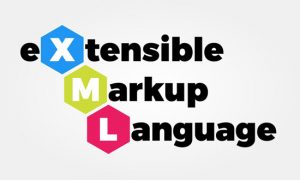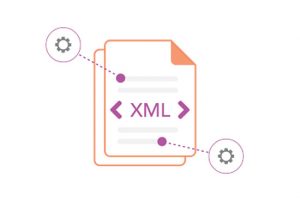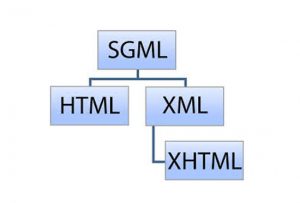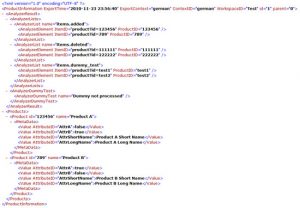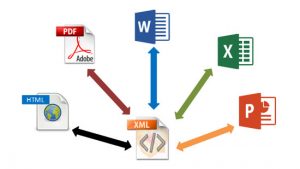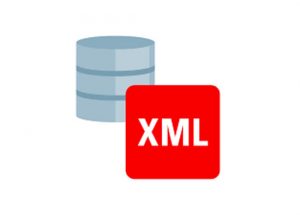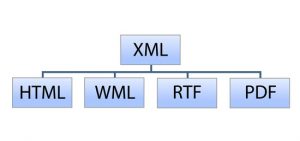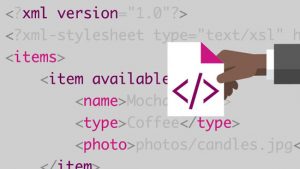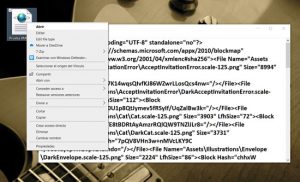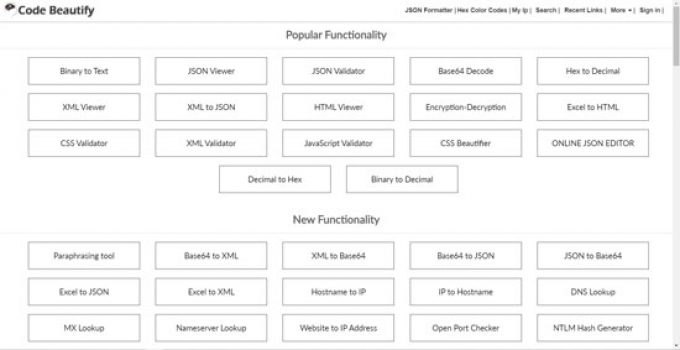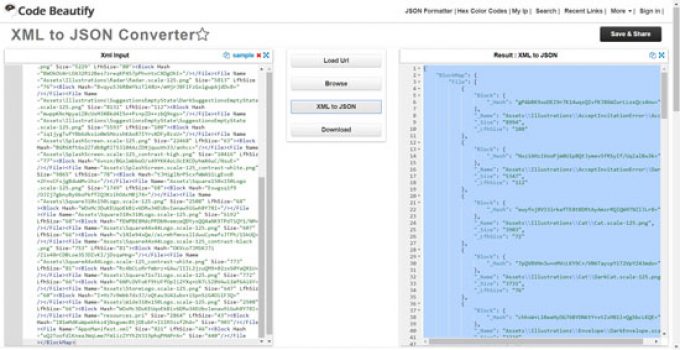From this article, you will know What is XML? What is it for? and what are its features and benefits?
It has been a long time since the Internet went from being a simple search engine for academic subjects and little else to practically becoming part of our life, occupying almost all the time when we are awake, and also when we are asleep. This has happened because the large network of networks has expanded offering services and tools that have been useful for us to develop our daily lives, both at home and at work.
This growth has required since its inception a consistent, modern, and secure technology, more precisely programming languages with which to implement all the tools offered by the Internet, from the simple and flat web, OneDrive, or Drive to YouTube or Instagram. Had it not been for the development of modern and flexible programming and markup languages, the Internet we know today would not have existed.
In this sense, XML has a lot to do with the development of the services that we can use in the network, and that is why in this post we will focus on its advantages.
What is XML?
Table of Contents
Although XML technology is applied in many fields of computing such as databases, text editors, Microsoft Word or spreadsheets, Excel, where it is used for the exchange of structured data between different platforms, the truth is that the web is the area of application in which we most notice its presence.
Although the HTML language is still the preferred tool to create the pages that make up the Internet, the truth is that the role of XML in this work is more important, with the leading roles being XML to structure information and HTML to determine how the data will be displayed in the browser. XML comes from the SGML standard, which is used to define generalized markup languages for documents.
Surely at this point, we will be thinking about why not simply use SGML to design web pages. The simple answer to this question is that SGML is too complex to be used in web applications or browsers.
Although the W3 Consortium evaluated how to take advantage of the qualities of SGML without having to face its complexity, the truth is that there was no easy way. That is why the XML is a software- and the hardware-independent tool was proposed: an Extensible language that retains the properties of SGML but is stripped of its complexity. With the help of this new standard, the limits of HTML can be exceeded.
The XML stands for “Extensible Markup Language“. It is a language used to structure the information in any document that contains text, such as the configuration files of a specific application or a database.
The reason for its popularity, which has grown in recent years, is because it is an open and also free standard, created by W3C, the World Wide Web Consortium, the same creators of the WWW, in collaboration with a team that includes representatives of the most important software companies. The XML language was created in 1996. Since then its use has had sustained growth.
What is XML for?
XML is a meta-language that gives us the possibility of defining markup languages suitable for the applications in which we are going to use it. The SGML stands for (Standard Generalized Mark-up Language), a protocol for defining markup languages developed by the IBM company in the early 1970s, to cover the need to share large volumes of information with other software platforms and operating systems in a simple, secure, reliable way.
By implementing the XML standard, the user can define their markers, such as the so-called “CDF” (Channel Definition Format), which was integrated into Microsoft Internet Explorer in version 4, constitutes an XML application.
However, the most common implementation of the XML is to use it to define the structure of documents. The XML language was not only designed for application in web services, but it is also a standard for the exchange of information between different platforms. It can be used to structure databases, text editors, or spreadsheets. XML represents the ideal interface between web pages and databases.
Although XML software- and the hardware-independent tool is very simple, the truth is that its main characteristic is being able to complement it with other technologies and these facts that undoubtedly make it a perfect tool to grow according to the needs of each project. That is why today XML is the necessary complement for everything to work the way we know it and we want it to work.
Features :
As we know, the XML is a software- and hardware-independent tool deals with a set of rules developed to allow working with large volumes of data in a way that is easy for the computer and the programs that use this data. That is why it has been so successful in its implementation in all kinds of apps and services where it deals with a lot of information, such as a database.
Without a doubt, the best feature of XML lies in its design, which has been focused from the beginning to ensure excellent performance, simplicity of implementation and ease of use in web services, achievements that it achieved with absolute success, especially in the field of large-scale electronic media publishing.
To achieve this objective, the chosen format needed to be in text format, a fact that makes the content of XML documents understandable for both people and devices. It also offers support for all languages, which undoubtedly allowed it to expand as fast as it did.
However, XML has other features, all are important and interesting as those mentioned, such as allowing the creation of your tags, as well as the assigning attributes to them, including metadata in the same document, which allows it to be indexed more effectively by search engines, which makes it easier for search engines on the web, which will thus show much more accurate results.
Other characteristics of XML is that both the structure and the design of documents are completely separated, it allows exporting the data contained in other formats such as HTML, PDF, RTF, and others, also, a fundamental function is to be able to share data between different systems and platforms, such as web pages and databases. Furthermore, the XML software- and hardware-independent tool uses specific data generation rules so that documents can be processed without compatibility problems by multiple systems.
Another advantage of XML is that since it is a software- and hardware-independent tool that makes internationalization possible, it allows the use of various character sets, something fundamental in the idea of globalization. Finally, the XML software- and hardware-independent tool, does not have any kind of license restrictions.
The Advantages:
The advantages that XML has offered us through its implementation are many and very valuable, both for developers and users, since while the former can take advantage of its implementation to make things simpler and faster, the latter enjoy these best every day in their applications.
As we have mentioned above, XML (eXtensible Markup Language) began to develop in the mid-1990s due to the insistence of the World Wide Web Consortium (W3C) to find a way to standardize and improve markup language, to extend some of its possibilities such as integrating the simplicity of implementation that HTML offers with the expression capabilities of GML (Generalized Markup Language), this development created by IBM in the late 1960s.
Some of the reasons that led to the development of the XML tool were the need to implement improvements in the use of HTML, especially in issues related to styles applied to sites, the problems and limitations that existed when data had to be shared between different devices such as computers and smartphones, and also the difficulties in displaying the information contained in the implementation in different types of browsers or applications that needed to display this data, so that they could all be viewed in the same way.
As we can see, full compatibility between multiple devices was intended when having to work and display data.
What is an XML file?
XML extension files are Extensible Markup Language documents generated by various applications that work with data such as some database app files, RSS, and any other software that needs to have your data structured from an effective and reliable way.
In short, XML files are containers that store all the information, in the form of text, that the app that generated it requires to show the user the work they have done in a project generated in it.
That is why in these XML files we will find a nested structure of different types of data, such as text settings, the data we are working with, the different edits we have made to this data, and the locations of the files. Complementary that we have used to create the mentioned project, among many other data.
How to open XML files
Being XML text files, any of the text editors that we have at hand when we come across an XML file can be used to open and edit it, even the text editor included in Windows, Notepad, which will provide basic viewing and editing tools.
To open an XML file with Notepad, we can do the following:
Before starting, it is necessary to highlight that it may be that double-clicking on the XML file directly open it with Notepad, but in case, we can try the following.
Right-click on the XML file that we want to see and select the “Open with” option. There will appear some options, among them we select Notepad. In case Notepad does not appear, click on the option “Choose another application”.
It should be noted at this point that it can be any text editor, it does not necessarily have to be Notepad.
However, if we need a certain level of sophistication when editing XML files, we will require slightly more advanced tools, such as Microsoft Excel, Open Office, or Notepad ++, these last two tools being free. If we want to view and edit an XML file in the cloud, we can always use Google Sheet or Excel Online.
These types of applications have been developed precisely to be able to easily edit XML files, without the risk of corrupting the internal structure of said files.
However, although we can open and edit an XML file, this fact does not mean that we can make major changes since although each type of application stores its data in a standard XML file, the truth is that it can be structured in such a way that it is only possible to understand the data it contains to the application that generated it.
How to convert XML files
Before starting this task, it is necessary to know that although we can open an XML file using any text editor, it will not be enough to change the extension of an XML file to TXT so that we can read it perfectly in all applications. Although in some situations this procedure may be useful, the truth is that to obtain the highest level of compatibility, we must convert it.
In the case that we have among the applications installed on our computer the program that generated the XML file, we can check that it does not offer any way to convert the file to a different format, which would save us a lot of time and effort by having this capacity. Included among its functions.
If we do not have this above option, there are multiple tools to carry out this task, but the thing is that in these cases we use an online service, since in this way it will avoid having to install multiple apps, since the power accessing the cloud to convert an XML file is much more comfortable, practical and simple.
It is one of the best online services to convert XML files to other formats is Code Beautify, which we can access by clicking on this link. Once we access the site, we will find all the formats to which we can convert an XML file, among which are XML to HTML, XML to CSV, XML to XSD, XML to PDF, XML to XLS / XLSX, XML to SQL, XML to CSV and XML to JSON, among others. All this in the simplest way and the same interface.
To start converting an XML file, all we have to do is either load the file using the “Browse” button, select it from a URL, or paste the code that we have copied from the original file. To download the result, all we have to do is click on the “Download” button.


